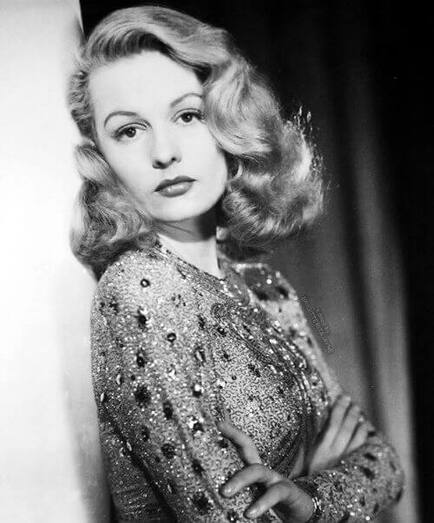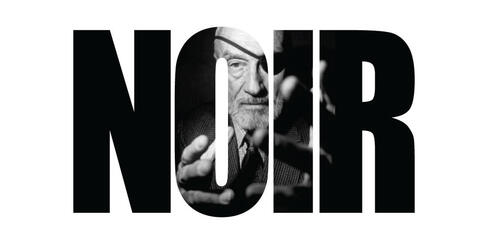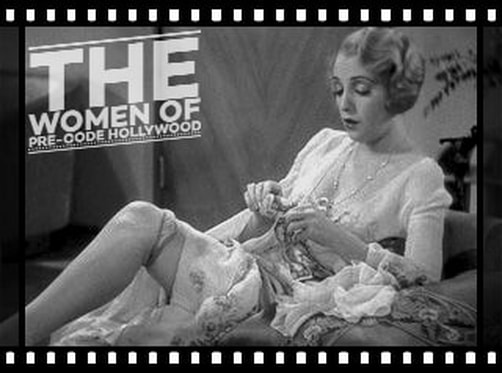SALLY GRAY
AND FILM NOIR
Sally Gray made a significant contribution to the film noir genre during the 1940s and early 1950s. Although she appeared in a range of film genres, Gray's performances in film noir showcased her talent for playing complex, enigmatic, and often morally ambiguous characters.
One of Gray's notable contributions to film noir came in the 1947 British film "Green for Danger." Directed by Sidney Gilliat, the film is a murder mystery set in a World War II hospital. Gray played the role of Nurse Woods, a suspicious and secretive character caught up in the intrigue surrounding a series of murders. Gray's performance added to the tension and suspense of the film, portraying Nurse Woods as a potential suspect while keeping the audience guessing about her true motivations.
Another significant film noir role for Gray came in the 1950 British film "The Blue Lamp." Directed by Basil Dearden, the film revolves around the hunt for a cop killer in post-war London. Gray played the role of Diana Lewis, a nightclub hostess involved with criminal activities. Her character's complicated relationship with the criminal underworld adds depth and complexity to the film's noir atmosphere.
Gray's performances in these films demonstrated her ability to embody the femme fatale archetype, bringing a sense of intrigue and ambiguity to her characters. She skillfully portrayed women who were often manipulative, dangerous, or caught in morally compromising situations, contributing to the dark and suspenseful atmosphere of film noir.
Outside of film noir, Gray appeared in various other genres, including dramas, comedies, and thrillers. She worked with notable directors such as Alfred Hitchcock in "The Man Who Knew Too Much" (1934) and Carol Reed in "Night Beat" (1947). However, it is her contributions to film noir that remain a significant part of her legacy as an actress.
Sally Gray's career slowed down in the mid-1950s, and she made her last film appearance in 1957. She transitioned to television and stage work, making occasional appearances in both mediums.
While Sally Gray may not be as widely recognized as some of the iconic film noir actresses of her time, her performances in films such as "Green for Danger" and "The Blue Lamp" showcased her talent for portraying complex and intriguing characters within the film noir genre. Her contributions added depth and suspense to the films she appeared in, solidifying her place in the history of British film noir.
One of Gray's notable contributions to film noir came in the 1947 British film "Green for Danger." Directed by Sidney Gilliat, the film is a murder mystery set in a World War II hospital. Gray played the role of Nurse Woods, a suspicious and secretive character caught up in the intrigue surrounding a series of murders. Gray's performance added to the tension and suspense of the film, portraying Nurse Woods as a potential suspect while keeping the audience guessing about her true motivations.
Another significant film noir role for Gray came in the 1950 British film "The Blue Lamp." Directed by Basil Dearden, the film revolves around the hunt for a cop killer in post-war London. Gray played the role of Diana Lewis, a nightclub hostess involved with criminal activities. Her character's complicated relationship with the criminal underworld adds depth and complexity to the film's noir atmosphere.
Gray's performances in these films demonstrated her ability to embody the femme fatale archetype, bringing a sense of intrigue and ambiguity to her characters. She skillfully portrayed women who were often manipulative, dangerous, or caught in morally compromising situations, contributing to the dark and suspenseful atmosphere of film noir.
Outside of film noir, Gray appeared in various other genres, including dramas, comedies, and thrillers. She worked with notable directors such as Alfred Hitchcock in "The Man Who Knew Too Much" (1934) and Carol Reed in "Night Beat" (1947). However, it is her contributions to film noir that remain a significant part of her legacy as an actress.
Sally Gray's career slowed down in the mid-1950s, and she made her last film appearance in 1957. She transitioned to television and stage work, making occasional appearances in both mediums.
While Sally Gray may not be as widely recognized as some of the iconic film noir actresses of her time, her performances in films such as "Green for Danger" and "The Blue Lamp" showcased her talent for portraying complex and intriguing characters within the film noir genre. Her contributions added depth and suspense to the films she appeared in, solidifying her place in the history of British film noir.
VIDEO TRIBUTE
Sally Gray

Sally Gray, born Constance Vera Stevens on February 14, 1916, in Holloway, London, was a British actress who enjoyed success in film and stage during the mid-20th century. Known for her beauty, talent, and versatility, Gray's career spanned several decades, leaving a lasting impact on the entertainment industry.
Gray began her acting career in the early 1930s, making her (credited) film debut in "Cross Currents" (1935).
She quickly gained recognition for her performances in a variety of genres, including dramas, comedies, thrillers, and film noir. Her ability to embody diverse characters and portray emotional depth made her a sought-after actress.
In the 1940s and early 1950s, Gray made notable contributions to the film noir genre, showcasing her talent for playing complex and enigmatic characters. Films like "The Saint in London" (1939), "Green for Danger" (1947), and "The Blue Lamp" (1950) demonstrated her ability to convey a sense of mystery, intrigue, and moral ambiguity. Her performances added depth and nuance to the noir atmosphere, contributing to the genre's popularity.
Beyond her work in film, Gray also had success on the stage. She appeared in numerous theater productions in London's West End, earning critical acclaim for her performances. Her stage career allowed her to further showcase her range as an actress and solidified her reputation as a versatile and talented performer.
While Gray's career slowed down in the 1950s, she continued to work in film, stage, and television sporadically. Her last film appearance was in "The Trygon Factor" (1966), and she made occasional television appearances throughout the following years.
Off-screen, Gray's personal life was relatively private. She was married to actor and playwright Michael Denison from 1939 until her death in 2006. The couple had two children together.
Sally Gray's talent, versatility, and contributions to film and stage have left a lasting legacy. Her performances in a range of genres, including film noir, demonstrated her ability to bring depth and complexity to her characters. Her captivating presence and skill as an actress continue to be celebrated, and she remains an esteemed figure in British cinema.
Gray began her acting career in the early 1930s, making her (credited) film debut in "Cross Currents" (1935).
She quickly gained recognition for her performances in a variety of genres, including dramas, comedies, thrillers, and film noir. Her ability to embody diverse characters and portray emotional depth made her a sought-after actress.
In the 1940s and early 1950s, Gray made notable contributions to the film noir genre, showcasing her talent for playing complex and enigmatic characters. Films like "The Saint in London" (1939), "Green for Danger" (1947), and "The Blue Lamp" (1950) demonstrated her ability to convey a sense of mystery, intrigue, and moral ambiguity. Her performances added depth and nuance to the noir atmosphere, contributing to the genre's popularity.
Beyond her work in film, Gray also had success on the stage. She appeared in numerous theater productions in London's West End, earning critical acclaim for her performances. Her stage career allowed her to further showcase her range as an actress and solidified her reputation as a versatile and talented performer.
While Gray's career slowed down in the 1950s, she continued to work in film, stage, and television sporadically. Her last film appearance was in "The Trygon Factor" (1966), and she made occasional television appearances throughout the following years.
Off-screen, Gray's personal life was relatively private. She was married to actor and playwright Michael Denison from 1939 until her death in 2006. The couple had two children together.
Sally Gray's talent, versatility, and contributions to film and stage have left a lasting legacy. Her performances in a range of genres, including film noir, demonstrated her ability to bring depth and complexity to her characters. Her captivating presence and skill as an actress continue to be celebrated, and she remains an esteemed figure in British cinema.
Quotes:
n/a
Trivia:
Sally's stepson, Tara Browne, from her husband's second marriage, was a friend of John Lennon's. Tara drove his Lotus Elan into a lamp-post in Redcliffe Square, London, in 1966, and became a subject in The Beatles' song "A Day in the Life", which contained the memorable verse: "He blew his mind out in a car; he didn't notice that the lights had changed; a crowd of people stood and stared; they'd seen his face before; nobody was really sure if he was from the House of Lords...".
Sally Gray was trained as a dancer by Fred Astaire.
Voluptuous blonde British leading lady of routine 30s filming who suffered a nervous collapse in 1941, returning briefly before retiring for marriage.
Sally Gray was trained as a dancer by Fred Astaire.
Voluptuous blonde British leading lady of routine 30s filming who suffered a nervous collapse in 1941, returning briefly before retiring for marriage.




